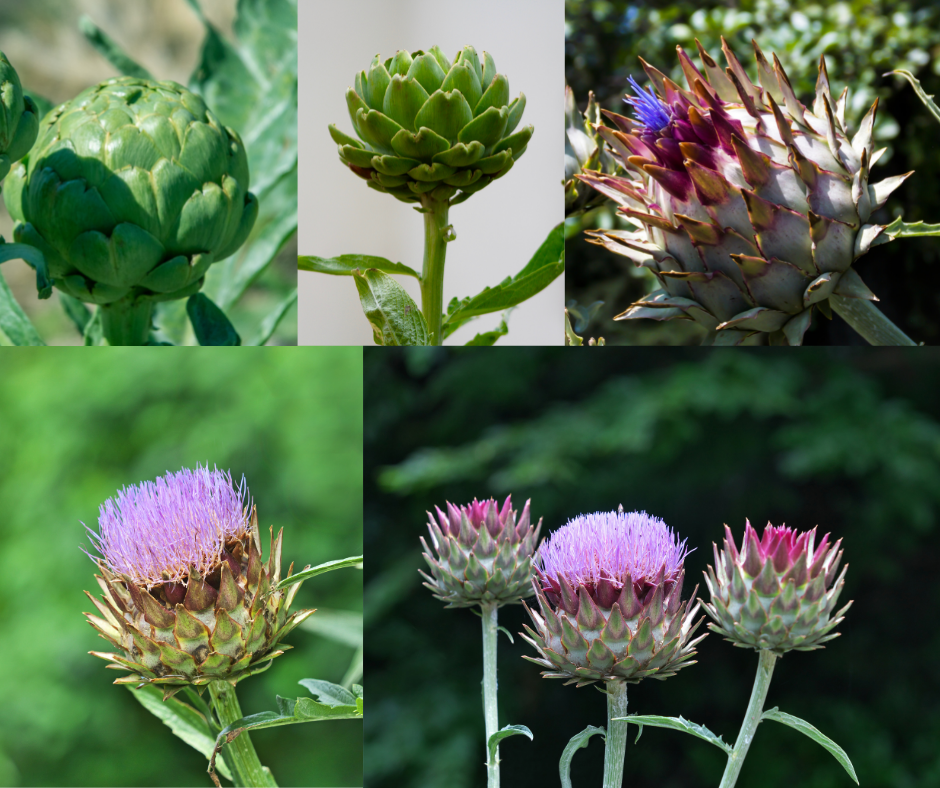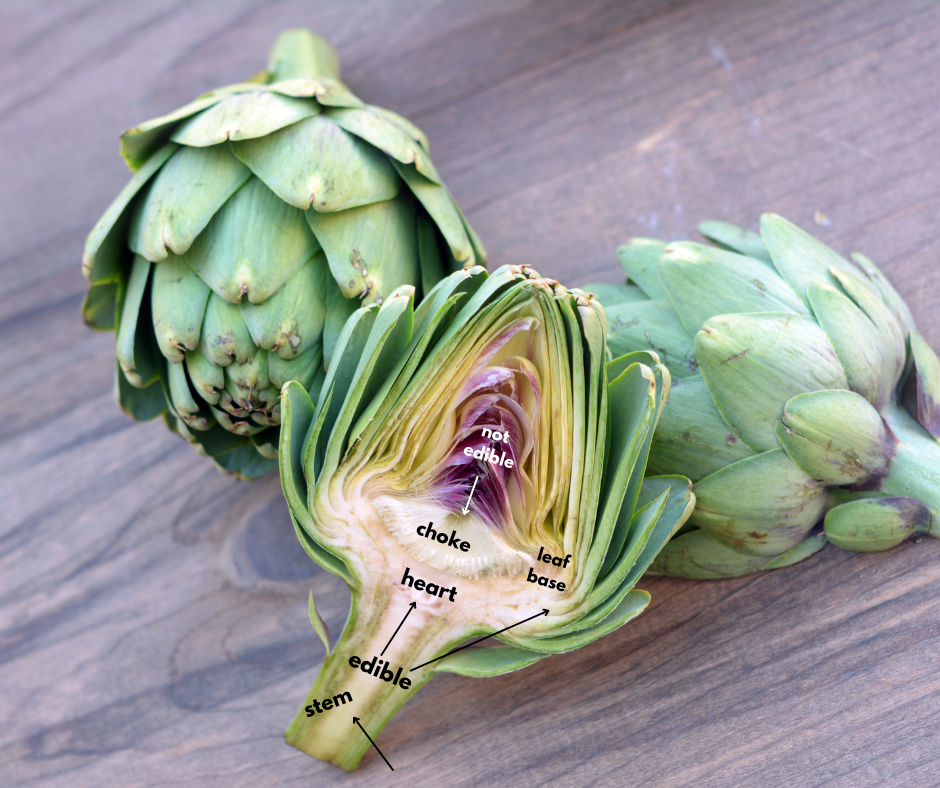 What is It?
What is It?
Artichokes are part of the thistle family – a group of flowering plants that are categorized by leaves with prickles. It’s actually the flower bud…look at the stunning photos above! So cool right?
You might have heard of Jerusalem artichokes or Japanese Artichokes – but the “Globe” artichoke is considered the true artichoke.
Season
Fresh globe artichokes are usually available year round but the peak season is March through May and a small crop around October. Purple artichokes are considered more tender, but there is less availability.

How To Pick
Choose artichokes with tight leaves that have a bright coloring – although in the early season, a slight discoloration around the edges of the leaf may be present and don’t affect quality. It’s a sign of a light frost; which many consider to be the most tender and intensely flavored after a frost. It’s referred to as “winter’s kiss”
It should be heavy for its size, and the leaves should make a “squeak” when pressed. Together.
Avoid leaves that are spread apart, (indicates that the artichoke is old) wilting, moldy or otherwise look dried out.
How To Prep
-They are best used right away but you can store them in the refrigerator for about a week max.
-Keep in mind that whenever working with artichokes, you need lemon and /or acidulated water so they don’t turn brown.
The only edible part of the artichoke is the heart (also called the artichoke bottom). You decide if you want to do more work up front and make the eating easier, or less work up front and the eating part is more involved.
Watch this quick video, but primarily you want to cut off the tip of the leaves that have the thorns, and from there you can cut it in half, or you can leave it whole.
Ways To Cook Artichokes
Artichokes can be prepared by these cooking methods:
Steam
Simmer
Boil
Roast
Grill (parcook with another method)
Fry